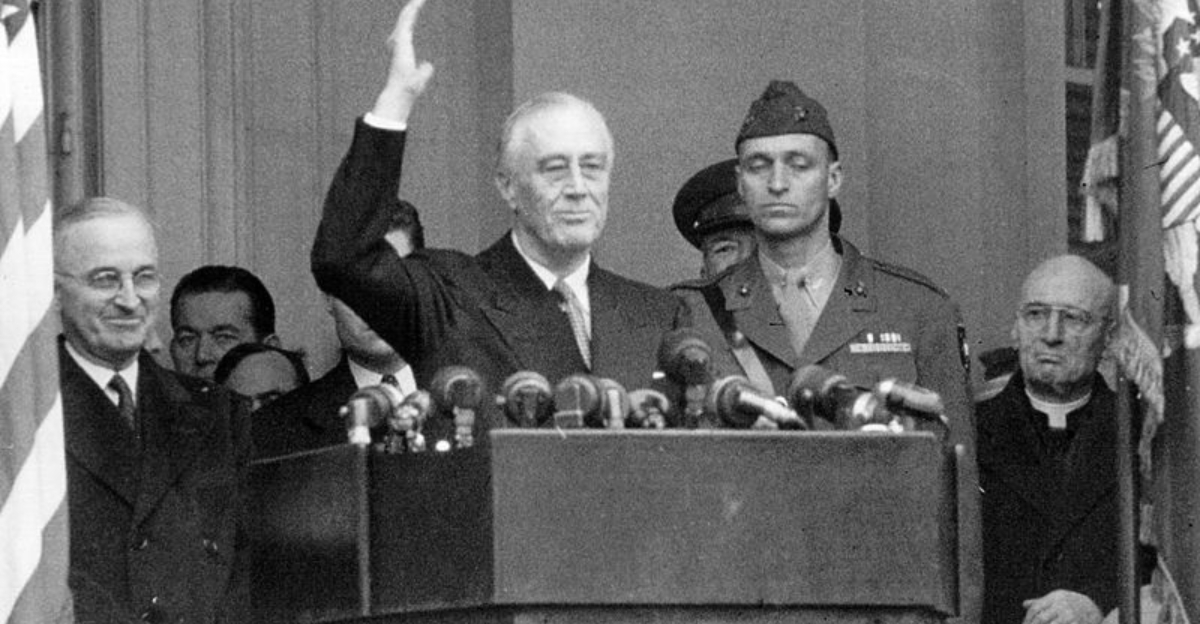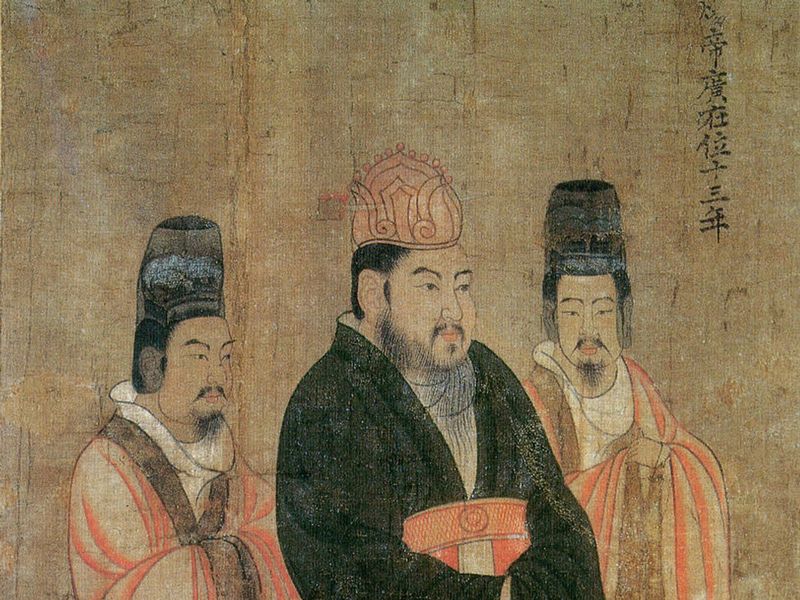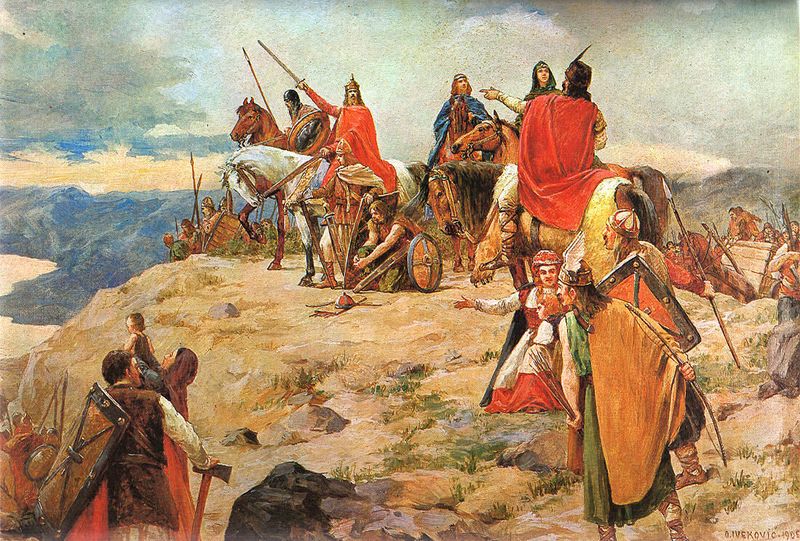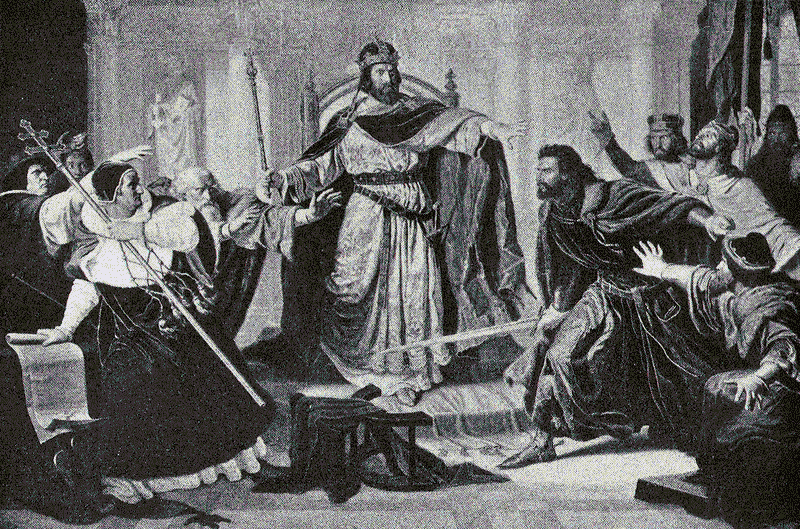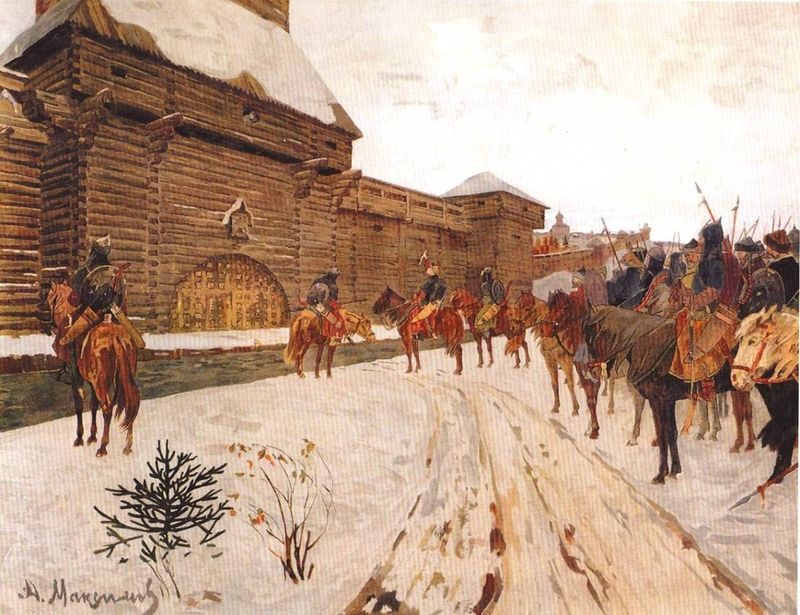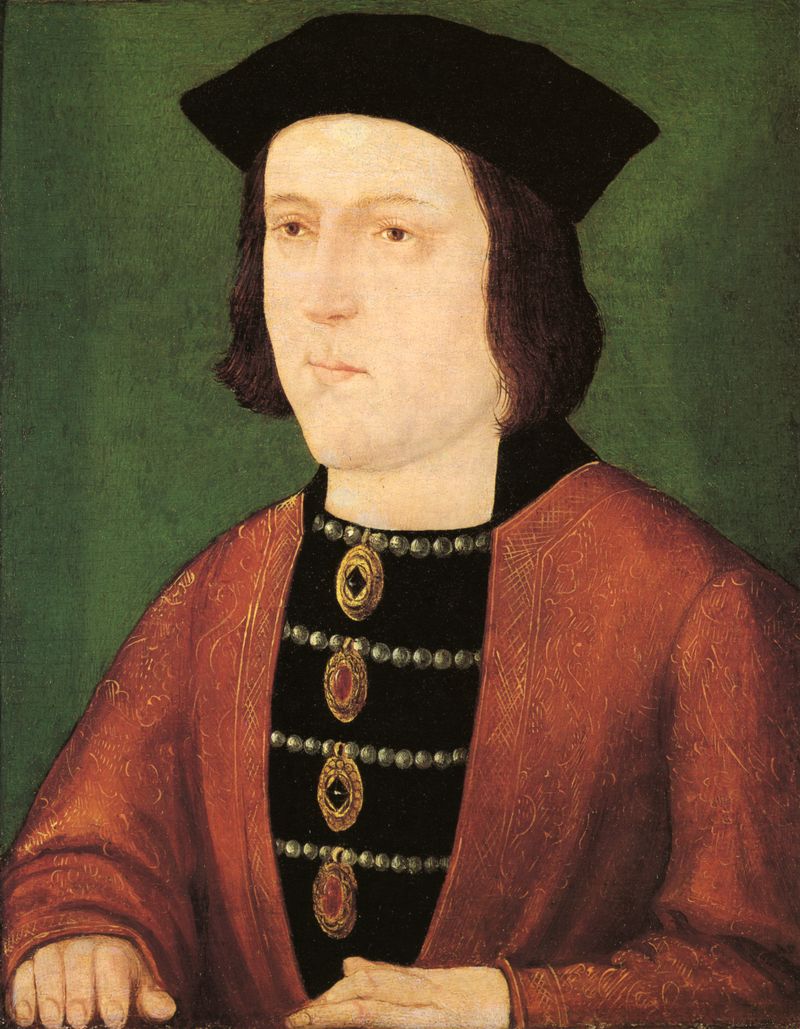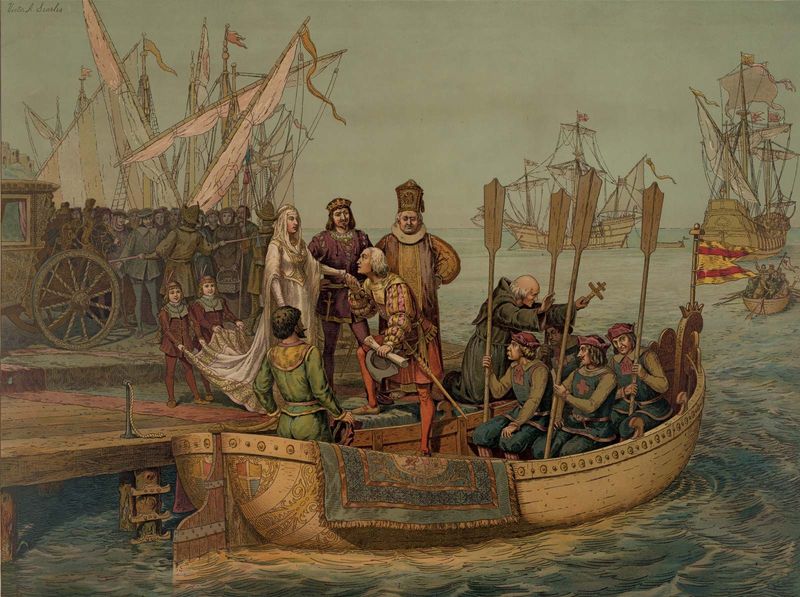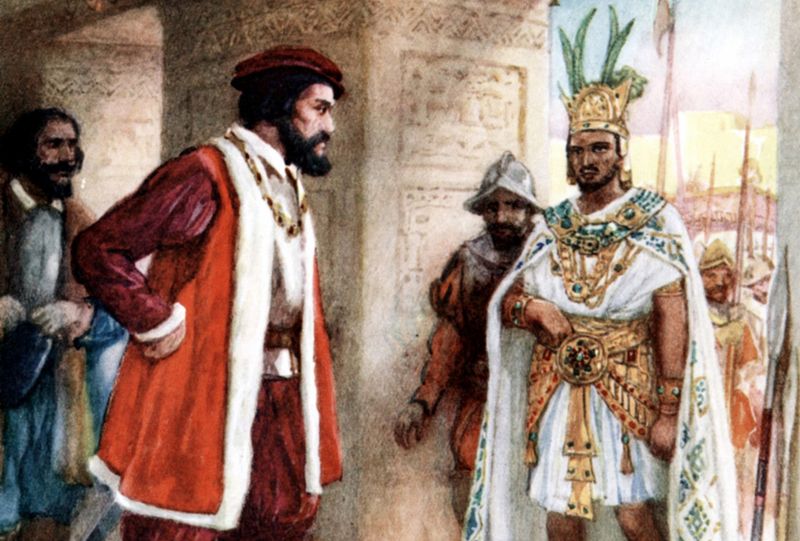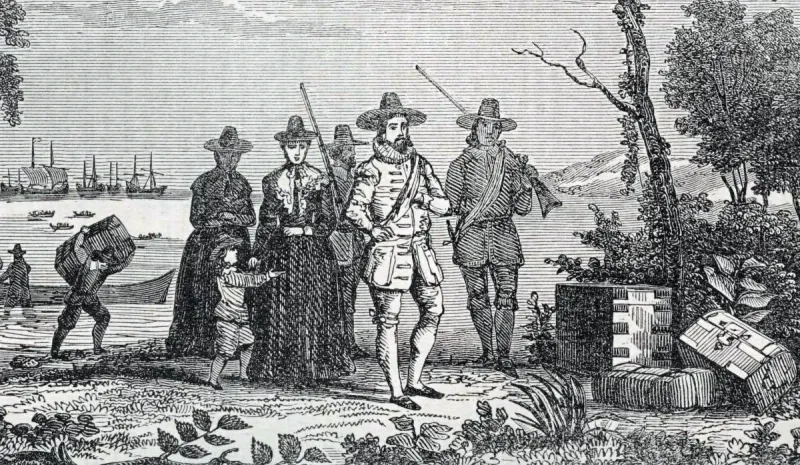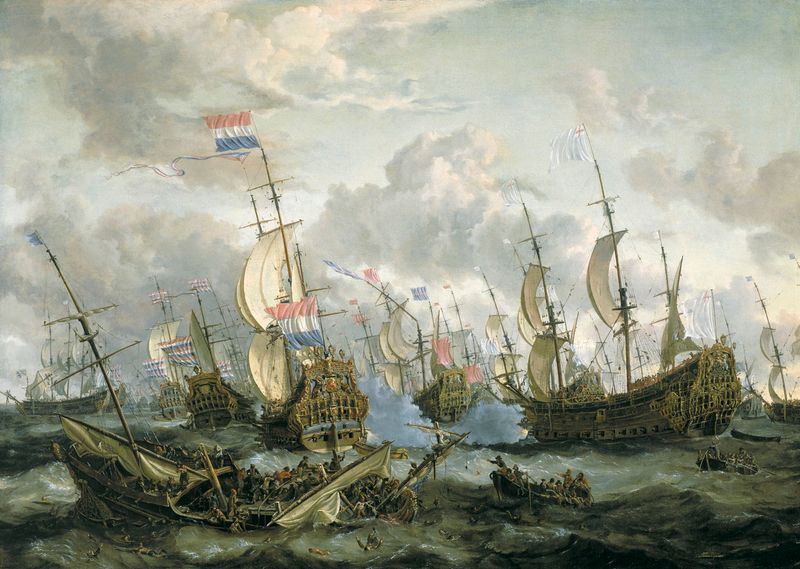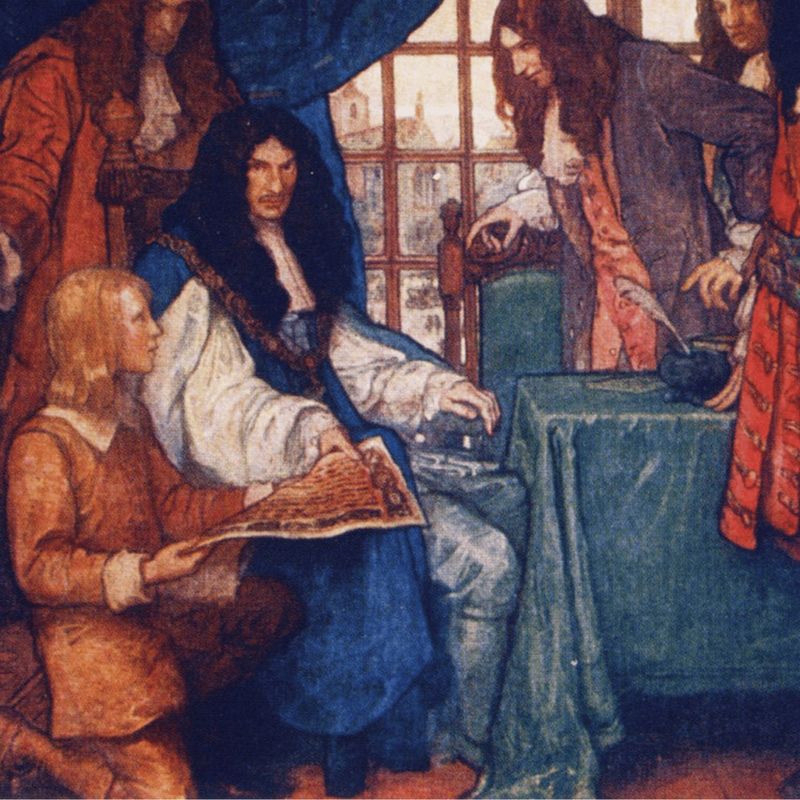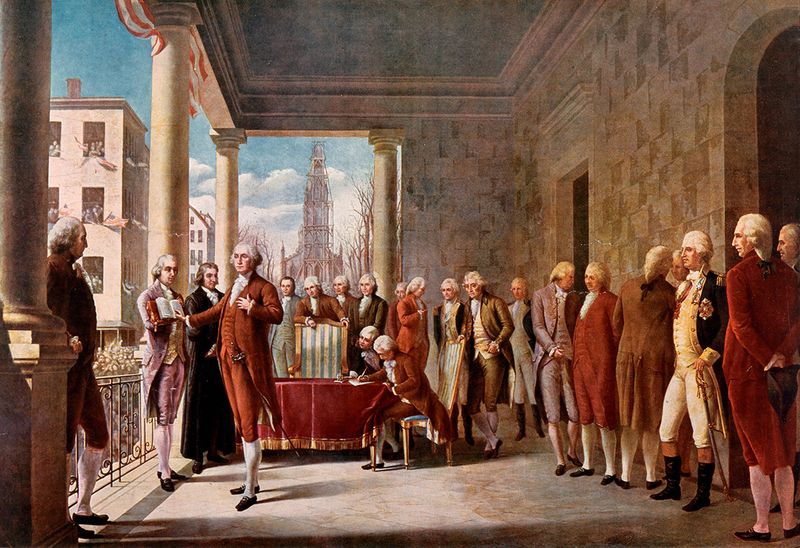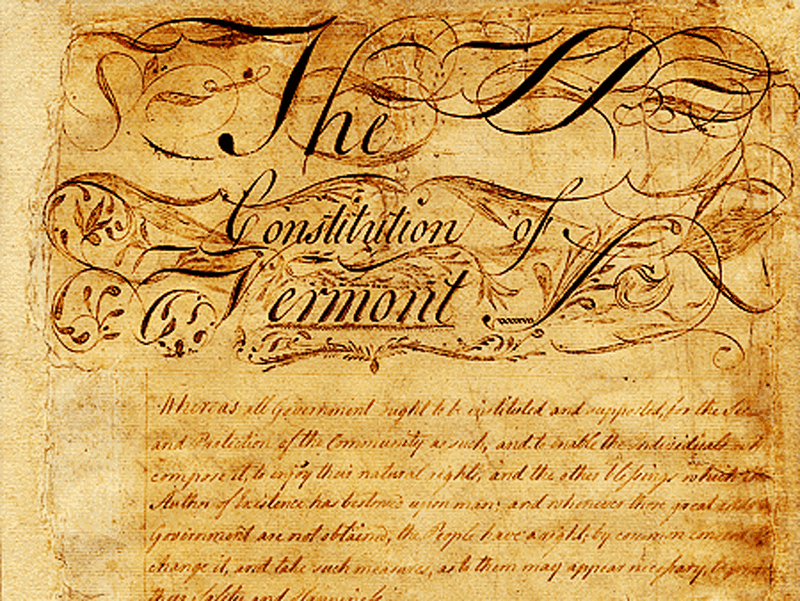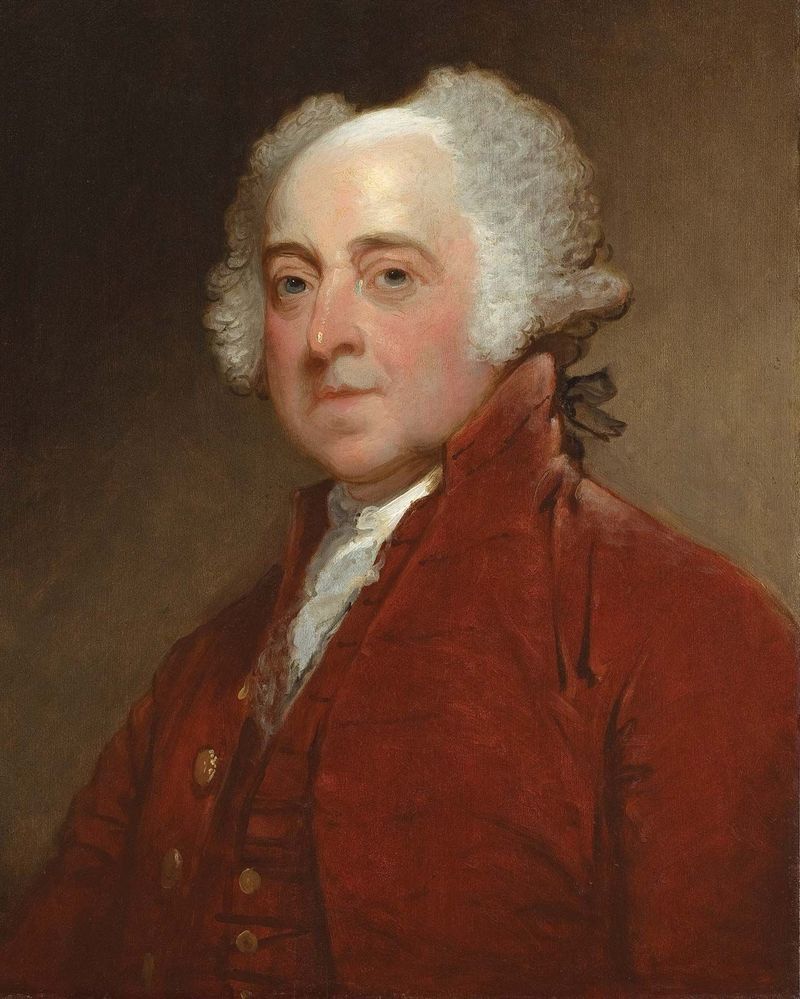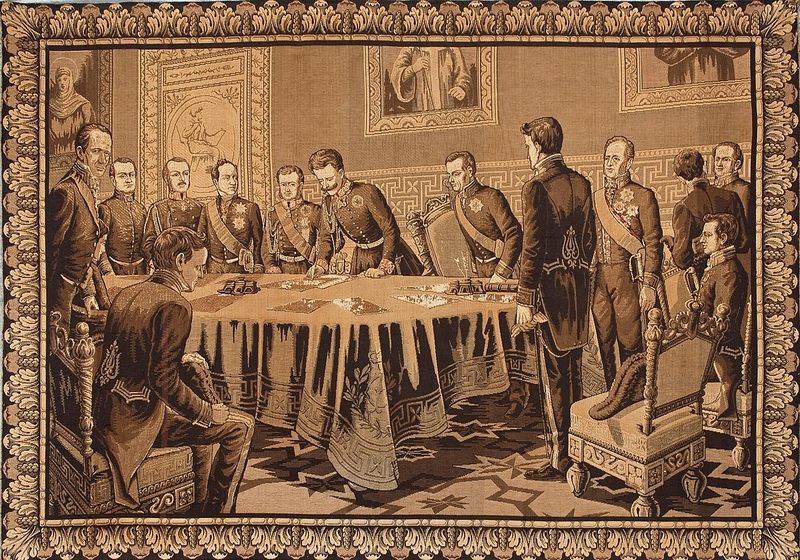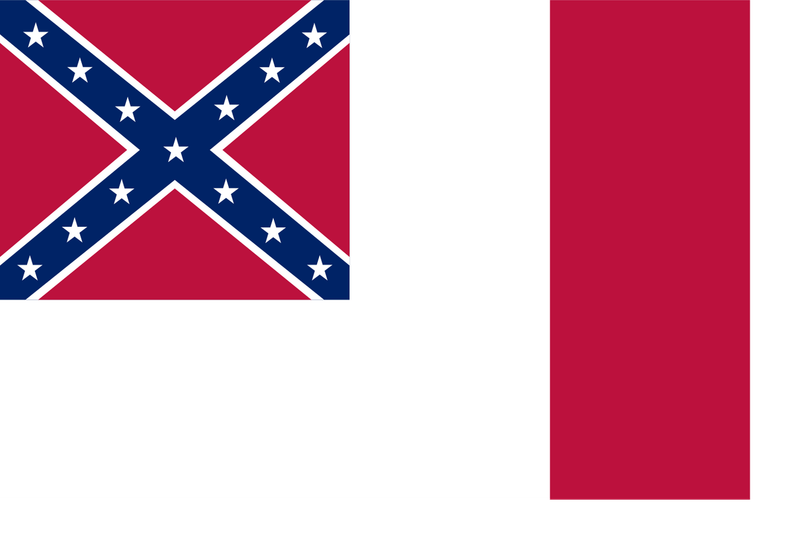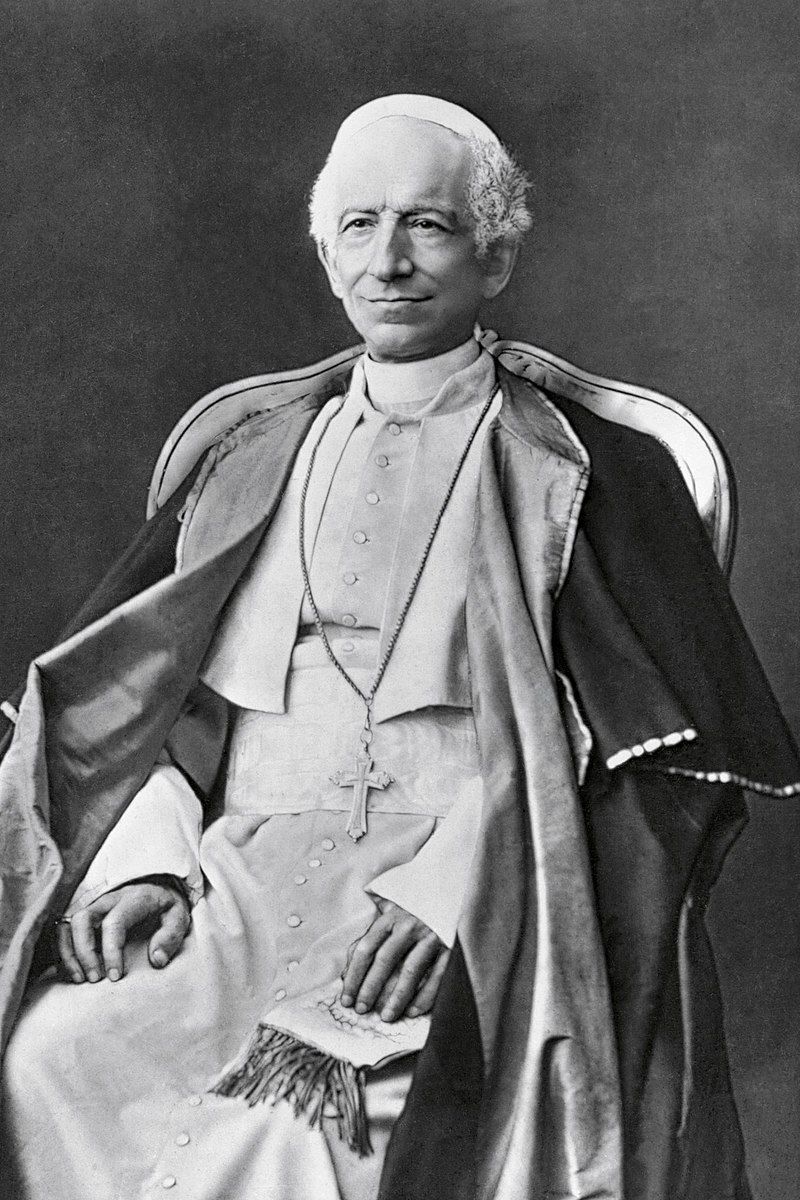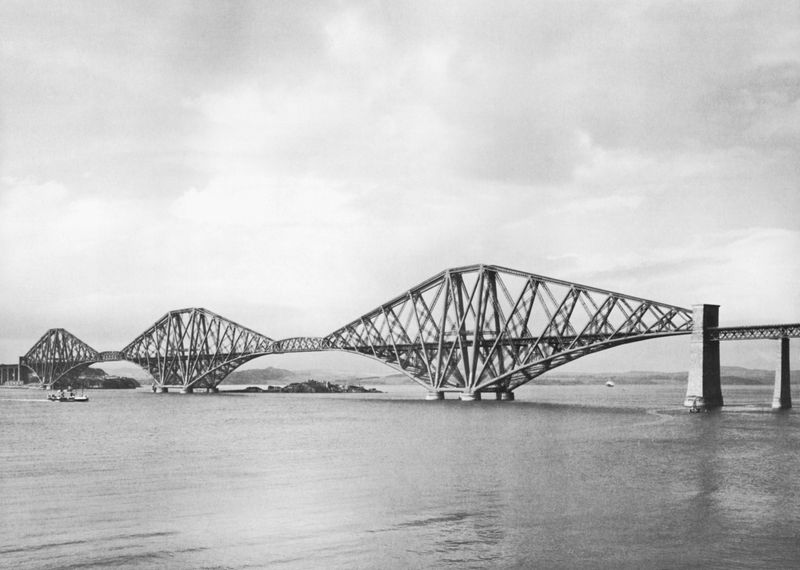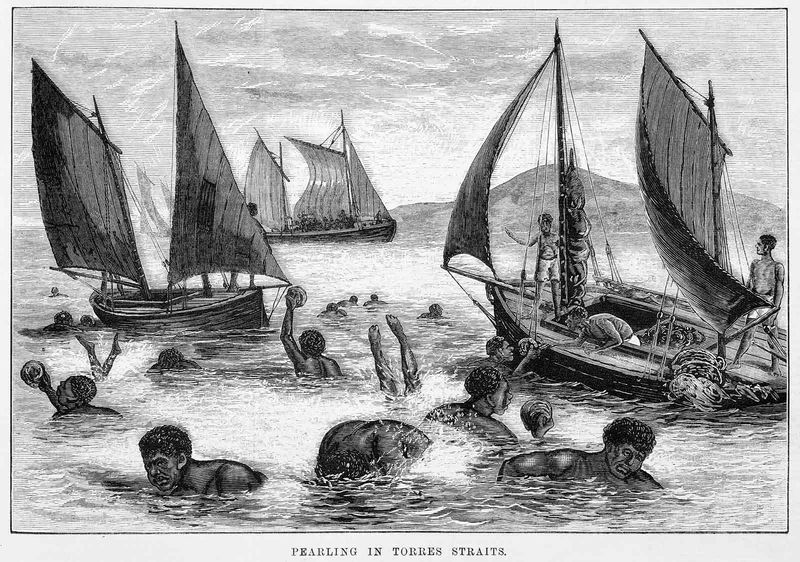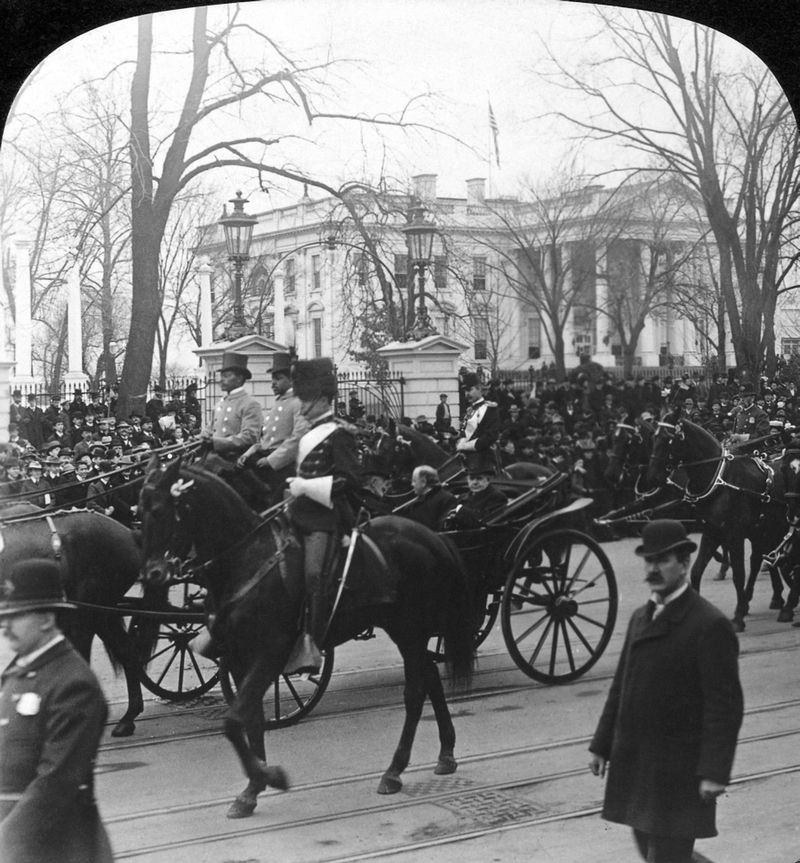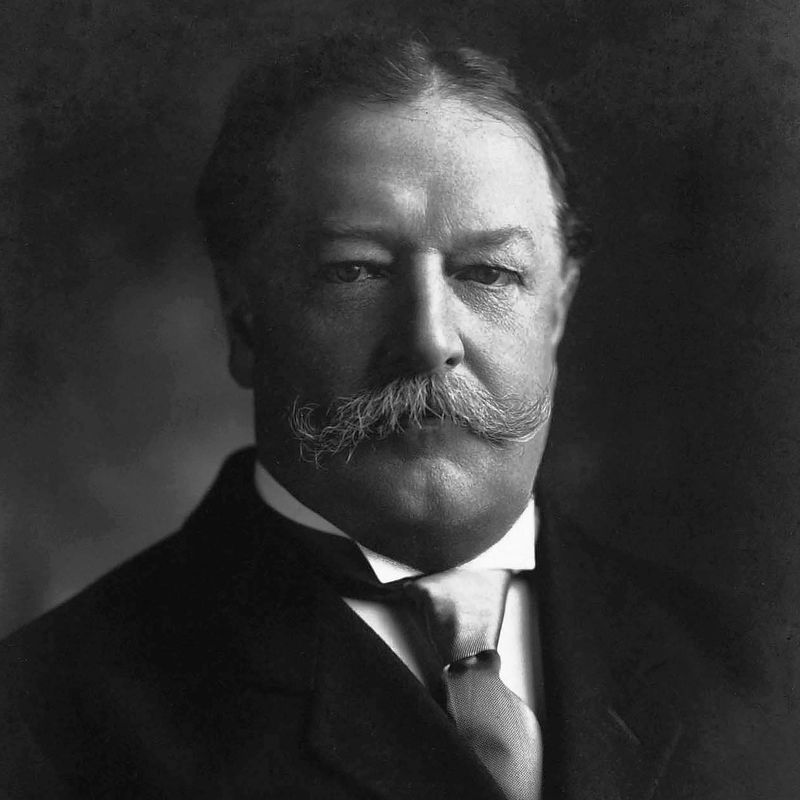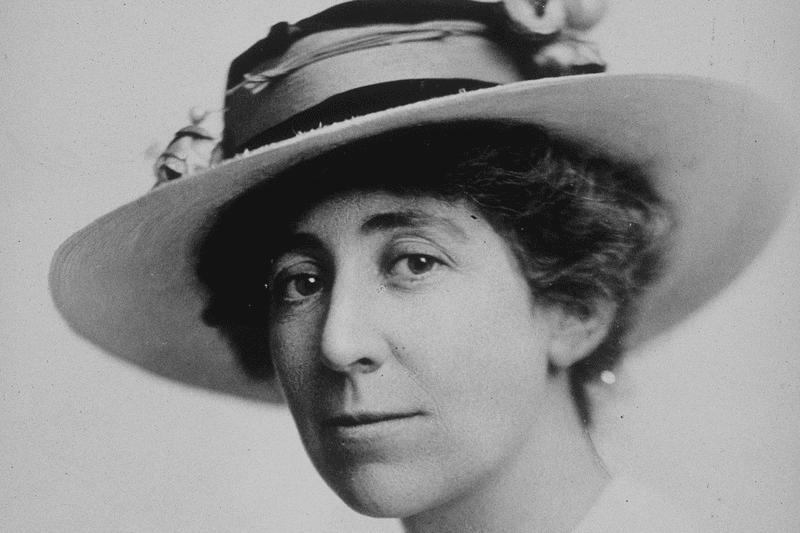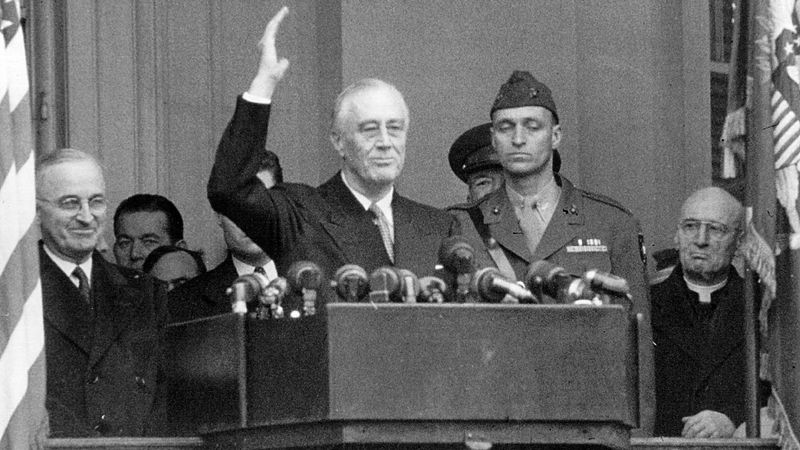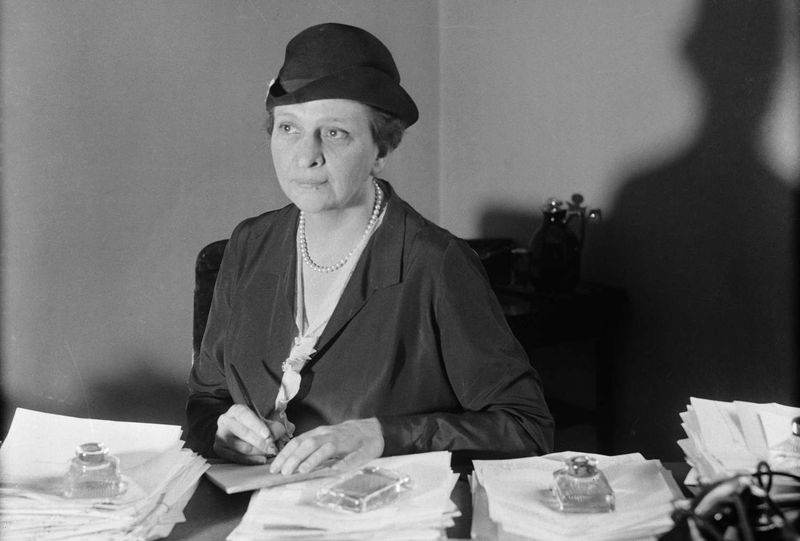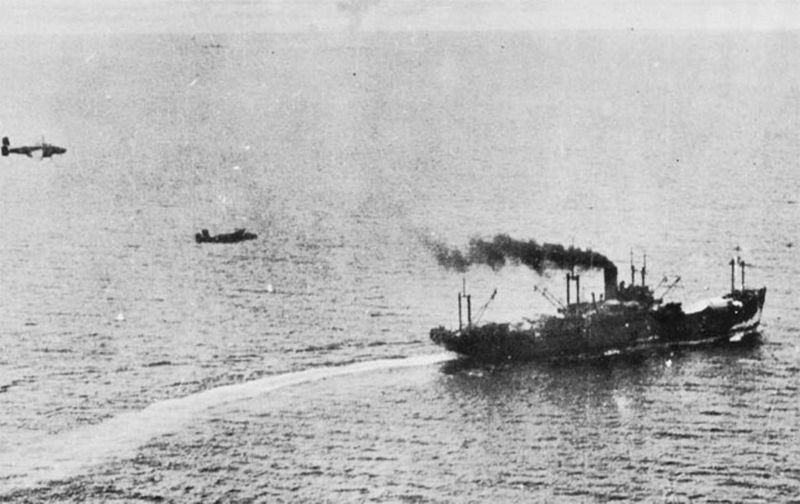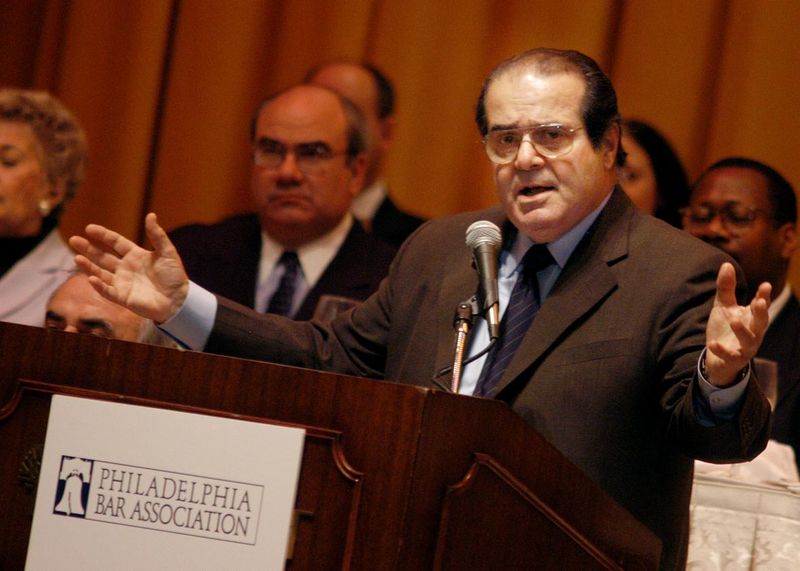March 4th has been a remarkable date throughout history, witnessing pivotal events that shaped the course of nations and cultures.
From battles and political shifts to scientific advancements and cultural milestones, this date carries a profound legacy. Below, we explore 30 defining moments that occurred on March 4th, each leaving its indelible mark on the world.
Join us as we traverse through time, delving into these significant occurrences that have contributed to the rich tapestry of human history.
1. 306 – Martyrdom of Saint Adrian of Nicomedia
Saint Adrian of Nicomedia, a Roman soldier, became a renowned martyr on March 4th, 306. His conversion to Christianity inspired many, and his subsequent arrest and execution highlighted the intense persecution of Christians during that era.
Adrian’s legacy endured, symbolizing faith and resilience. He is often depicted in art with military attire, holding a sword and a martyr’s palm. His story is a poignant reminder of the sacrifices made for religious beliefs in antiquity.
This event marked a turning point in the spread and eventual acceptance of Christianity within the Roman Empire.
2. 581 – Yang Jian Declares Himself Emperor Wen, Founding the Sui Dynasty
In 581, Yang Jian proclaimed himself Emperor Wen of the newly founded Sui Dynasty. This marked the end of the chaotic Northern and Southern Dynasties period.
Emperor Wen’s rule is credited with unifying China and implementing reforms that strengthened the central government. He promoted Buddhism, constructed the Grand Canal, and simplified the taxation system.
These actions laid the groundwork for future prosperity. His reign set the stage for the subsequent Tang Dynasty, known for its cultural and economic achievements. Emperor Wen’s legacy is one of consolidation and innovation, pivotal in Chinese history.
3. 852 – Croatian Knez Trpimir I Issues First Document Mentioning the Croats
In 852, Knez Trpimir I issued a charter that marked the first known mention of the Croats. This document emphasized the political and cultural identity of the Croatian people.
Trpimir’s leadership consolidated territories and promoted Christianity, fostering a unified national consciousness. His reign is noted for the establishment of monasteries and strengthening ties with neighboring regions.
Trpimir’s contribution to Croatian history was significant, laying the foundation for the medieval Croatian state. This moment on March 4th is celebrated as a crucial step in the nation’s historical narrative and cultural heritage.
4. 1152 – Frederick I Barbarossa Elected King of Germany
On March 4th, 1152, Frederick I, known as Barbarossa, was elected King of Germany. His election marked the beginning of a reign characterized by ambition and military prowess.
Barbarossa sought to restore the Holy Roman Empire’s former glory, engaging in campaigns across Europe. His leadership style blended diplomacy and force, earning both respect and resistance.
Barbarossa’s efforts to balance power among German princes and the papacy left a lasting impact on medieval politics. His reign is remembered for its complex interplay of authority and tradition, shaping the course of German history.
5. 1238 – Battle of the Sit River: Mongol Domination of Russia Begins
The Battle of the Sit River on March 4th, 1238, marked the beginning of Mongol domination over Russia. Led by Batu Khan, the Mongol forces decisively defeated the Russian principalities, signaling a new era of foreign rule.
This victory allowed the Mongols to establish control over vast territories, influencing Russian culture and politics for centuries. The battle’s aftermath saw increased tributes and integration into the Mongol Empire’s expansive network.
This event underscored the formidable power of the Mongol armies and their strategic prowess, profoundly affecting the historical trajectory of Russia.
6. 1461 – King Henry VI Deposed, Edward IV Becomes King of England
March 4th, 1461, witnessed the deposition of King Henry VI and the ascension of Edward IV to the English throne. This shift occurred during the turbulent Wars of the Roses, a series of conflicts between the rival houses of Lancaster and York.
Edward’s rise marked a turning point, as he sought to stabilize the realm through strategic alliances and effective governance. His reign faced challenges, including continued conflict and political intrigue.
However, Edward’s leadership contributed to the eventual unification and peace in England, leaving a legacy of resilience and adaptability in the face of adversity.
7. 1493 – Columbus Returns to Portugal After His First Voyage to the Americas
On March 4th, 1493, Christopher Columbus returned to Portugal following his first voyage to the Americas.
This journey had profound implications, as news of his discoveries spread across Europe. Columbus’s return marked the beginning of an era of exploration and colonization.
His voyages challenged existing geographical knowledge and spurred further expeditions to the New World. Columbus’s achievements are viewed with mixed perspectives today, as they led to significant cultural exchanges and conquests.
Nonetheless, his return remains a milestone in the Age of Discovery, altering the course of global history irreversibly.
8. 1519 – Hernán Cortés Arrives in Mexico to Seek Aztec Wealth
In 1519, Hernán Cortés arrived in Mexico, embarking on a quest for Aztec wealth. His expedition was driven by ambitions of conquest and the spread of Christianity. Cortés’s arrival marked the beginning of a dramatic encounter between European and indigenous cultures.
His subsequent actions led to the downfall of the Aztec Empire, reshaping the region’s political and social landscape. The events initiated under his leadership are controversial, highlighting themes of colonialism and cultural exchange.
Cortés’s arrival on March 4th was a significant moment in the history of the Americas, with lasting repercussions.
9. 1628 – Massachusetts Bay Colony Receives Royal Charter
March 4th, 1628, marked the granting of a royal charter to the Massachusetts Bay Colony. This legal document authorized the establishment of a self-governing colony in the New World. The charter’s significance lay in its promotion of religious freedom and economic opportunity.
The colony became a haven for Puritans seeking to escape religious persecution in England. Its governance model influenced the development of democratic principles in America.
The Massachusetts Bay Colony’s founding is a testament to the enduring quest for liberty and prosperity, setting a precedent for future settlements in the United States.
10. 1665 – Charles II Declares War on the Netherlands (Start of Second Anglo-Dutch War)
On March 4th, 1665, King Charles II declared war on the Netherlands, initiating the Second Anglo-Dutch War. This conflict arose from trade rivalries and political tensions between the two maritime powers.
The war saw significant naval engagements and battles, influencing European power dynamics. Charles’s decision underscored the competitive nature of 17th-century international relations.
The war ended with the Treaty of Breda in 1667, altering colonial possessions and trade balances. This declaration of war is a reminder of the complexities of diplomacy and the pursuit of national interests during this era.
11. 1675 – John Flamsteed Appointed First Astronomer Royal of England
In 1675, John Flamsteed was appointed the first Astronomer Royal of England, marking a significant advancement in the field of astronomy. His appointment signaled the importance placed on scientific inquiry and exploration by the crown.
Flamsteed’s meticulous observations and cataloging of stars laid the groundwork for future astronomical research. His work at the Royal Observatory in Greenwich contributed to the field’s development, enhancing navigation and understanding of celestial phenomena.
Flamsteed’s legacy is celebrated for advancing scientific knowledge and inspiring future generations of astronomers. His appointment on March 4th remains a landmark in scientific history.
12. 1681 – Charles II Grants Land Charter to William Penn (Future Pennsylvania)
On March 4th, 1681, King Charles II granted a land charter to William Penn, paving the way for the establishment of Pennsylvania. This grant was significant for promoting religious tolerance and diversity.
Penn envisioned a colony where Quakers and others could practice their faith freely. His leadership fostered a society built on principles of equality and justice, attracting settlers from various backgrounds.
Pennsylvania’s founding influenced the development of democratic ideals in America, offering a model for governance based on fairness and inclusion. Penn’s charter remains a symbol of freedom and innovation in colonial history.
13. 1789 – First U.S. Congress Meets in New York City, Constitution Goes Into Effect
March 4th, 1789, marked the first meeting of the U.S. Congress in New York City, signifying the implementation of the Constitution. This moment laid the foundation for the United States’ federal government and legislative process.
The Congress’s convening underscored the country’s commitment to democratic principles and governance. This event set precedents for political discourse and decision-making in the fledgling nation.
The Constitution’s activation provided a framework for protecting individual liberties and balancing powers among branches of government, shaping the American political landscape for centuries to come.
14. 1791 – Vermont Becomes the 14th U.S. State
On March 4th, 1791, Vermont was admitted as the 14th state of the United States, marking a significant expansion of the young nation. Vermont’s entry into the Union highlighted the country’s growth and the incorporation of diverse regions.
This milestone underscored the evolving nature of the American political and geographical landscape. Vermont’s admission set a precedent for future statehood processes, emphasizing the importance of representation and equality among states.
This event on March 4th is a celebration of unity and progress in the American journey toward a more inclusive and expansive nation.
15. 1797 – John Adams Inaugurated as 2nd U.S. President
March 4th, 1797, witnessed the inauguration of John Adams as the second President of the United States. His presidency marked a pivotal moment in the nation’s history, transitioning leadership from George Washington.
Adams faced significant challenges, including foreign policy tensions and domestic political divisions. His administration is noted for navigating these issues with integrity and commitment to constitutional principles.
Adams’s presidency set a standard for peaceful transitions of power, a cornerstone of American democracy. His leadership on March 4th is remembered for its dedication to maintaining national unity and preserving democratic ideals.
16. 1848 – Carlo Alberto Signs the Statuto Albertino (First Constitution of Italy)
On March 4th, 1848, King Carlo Alberto of Sardinia signed the Statuto Albertino, Italy’s first constitution. This act represented a major step towards constitutional monarchy and liberal reforms in the Italian states.
The Statuto provided for a bicameral parliament and civil liberties, laying the groundwork for Italian unification. Carlo Alberto’s initiative reflected the growing demand for democratic governance and national identity.
His actions on this day are celebrated as a turning point in Italy’s political evolution, fostering a sense of unity and progress toward the eventual unification of the Italian Peninsula.
17. 1861 – First National Flag of the Confederate States Adopted
March 4th, 1861, saw the adoption of the first national flag of the Confederate States, known as the ‘Stars and Bars.’ This symbol represented the newly formed Confederacy and its bid for sovereignty.
The flag’s design incorporated elements reflecting Southern heritage and aspirations. Its adoption signified the growing division within the United States, leading to the American Civil War.
This moment is a reminder of the turbulent and contentious period in American history, highlighting themes of identity and conflict as the nation grappled with issues of union and separation.
18. 1865 – Final National Flag of the Confederacy Adopted
On March 4th, 1865, the Confederate States adopted their final national flag, designed to address issues with previous iterations. This flag’s design aimed to distinguish the Confederacy from the Union.
The adoption occurred during the closing months of the Civil War, a period marked by intense conflict and significant losses. This flag symbolizes the Confederacy’s struggle to maintain its identity amid the war’s challenges.
The event is reflective of the broader themes of division and resolution that characterized this era in American history, as the country moved towards reunification.
19. 1878 – Pope Leo XIII Reestablishes Catholic Church Hierarchy in Scotland
In 1878, Pope Leo XIII reestablished the Catholic Church hierarchy in Scotland, a significant religious and cultural development. This restoration marked the end of centuries of suppression following the Reformation.
The reestablishment aimed to strengthen Catholic influence and community in Scotland, fostering religious diversity and tolerance. It was a pivotal moment for Scottish Catholics, signaling a new era of acceptance and growth.
Pope Leo XIII’s actions on March 4th are remembered for their contribution to religious reconciliation and the revitalization of Catholic traditions in a historically Protestant nation.
20. 1890 – Forth Bridge in Scotland Officially Opened
March 4th, 1890, marked the official opening of the Forth Bridge in Scotland, a monumental achievement in engineering. This cantilever railway bridge became an iconic symbol of industrial innovation and progress.
Spanning the Firth of Forth, it connected Edinburgh with Fife, facilitating transportation and economic growth. The bridge’s construction involved cutting-edge techniques and materials, showcasing human ingenuity.
Its opening was a transformative moment for infrastructure development in the United Kingdom, reflecting the era’s spirit of advancement and modernization. The Forth Bridge remains a testament to engineering excellence and vision.
21. 1899 – Cyclone Mahina Hits Australia, Killing Over 300
On March 4th, 1899, Cyclone Mahina struck Australia, causing widespread devastation and loss of life. With winds estimated at 120 mph, it remains one of the most powerful tropical cyclones recorded in the Southern Hemisphere.
The cyclone’s impact was catastrophic, affecting coastal communities and maritime activities. Alerting the international community to the need for improved weather forecasting and emergency preparedness.
This event highlighted the vulnerability of human settlements to natural disasters, prompting advancements in meteorology and disaster response. Cyclone Mahina’s legacy serves as a cautionary tale of nature’s immense power and unpredictability.
22. 1901 – President William McKinley Inaugurated for Second Term
March 4th, 1901, saw the inauguration of President William McKinley for his second term. His presidency was marked by economic prosperity and increased international influence for the United States.
McKinley’s leadership navigated complex issues, including the Spanish-American War’s aftermath and emerging economic challenges. His administration focused on modernization and fostering American industry.
McKinley’s second term was cut short by his assassination later that year, but his impact on U.S. policy and global standing endured. His inauguration on this day reflects the nation’s aspirations for growth and prominence on the world stage.
23. 1909 – President William Taft Uses the “Saxbe Fix” to Appoint Philander Knox
In 1909, President William Taft employed the “Saxbe Fix” to appoint Philander Knox as Secretary of State. This legal maneuver circumvented a constitutional provision preventing sitting members of Congress from accepting certain federal appointments.
The appointment highlighted the strategic approaches used in political appointments and constitutional interpretations. Knox’s tenure was marked by diplomatic initiatives and legal reforms.
Taft’s use of the “Saxbe Fix” underscores the complexities of governance and the creative solutions employed to uphold constitutional principles while pursuing administrative objectives. This event on March 4th illustrates the evolving nature of U.S. political practices.
24. 1913 – U.S. Department of Labor is Formed
On March 4th, 1913, the U.S. Department of Labor was established, marking a milestone in advocating for workers’ rights and regulations. Its formation underscored the growing recognition of labor issues and the need for federal oversight.
The department’s creation aimed to improve working conditions, promote fair employment practices, and enhance labor relations. It played a crucial role in shaping policies and advancing labor rights in the United States.
The establishment of the Department of Labor reflects a commitment to social justice and economic equity, fostering a more balanced and fair workforce.
25. 1917 – Jeannette Rankin Becomes First Woman in U.S. Congress
March 4th, 1917, marked the historic election of Jeannette Rankin as the first woman to serve in the U.S. Congress. Her election was a groundbreaking moment for gender equality in American politics.
Rankin’s advocacy for women’s rights and peace distinguished her tenure, influencing legislative priorities and paving the way for future female leaders. Her presence in Congress challenged societal norms and demonstrated the growing political influence of women.
Rankin’s election on this day is celebrated as a triumph of perseverance and progress, symbolizing the ongoing struggle for equality and representation in governance.
26. 1933 – Franklin D. Roosevelt Inaugurated as 32nd U.S. President
On March 4th, 1933, Franklin D. Roosevelt was inaugurated as the 32nd President of the United States, a pivotal moment during the Great Depression. His leadership promised hope and change through the New Deal policies.
Roosevelt’s administration focused on economic recovery, social welfare, and regulatory reforms. His inaugural address famously declared, “The only thing we have to fear is fear itself.”
Roosevelt’s presidency redefined the role of the federal government in addressing economic and social challenges, leaving a lasting legacy of resilience and innovation in American history.
27. 1933 – Frances Perkins Becomes First Female U.S. Cabinet Member
Also on March 4th, 1933, Frances Perkins made history as the first female U.S. Cabinet member, serving as Secretary of Labor. Her appointment was a landmark achievement in the advancement of women in political leadership.
Perkins played a crucial role in shaping New Deal policies, advocating for labor reform and social security. Her contributions significantly influenced the direction of American labor laws and welfare systems.
Perkins’s legacy is celebrated for her pioneering spirit and dedication to improving the lives of working Americans. Her appointment represents a milestone in gender equality in the U.S. government.
28. 1943 – Battle of the Bismarck Sea Ends in World War II
The Battle of the Bismarck Sea, ending on March 4th, 1943, was a decisive engagement in the Pacific Theater of World War II. Allied forces successfully intercepted and destroyed a Japanese convoy, hindering their military capabilities.
The battle underscored the importance of air superiority and strategic planning in modern warfare. It marked a turning point in the Allies’ favor, contributing to their eventual victory in the Pacific.
This event highlighted the evolving nature of combat, emphasizing coordination and technology’s role in achieving military objectives during World War II.
29. 1957 – S&P 500 Stock Market Index Introduced
On March 4th, 1957, the S&P 500 stock market index was introduced, revolutionizing the way investors track the financial performance of American companies.
This index included 500 leading publicly-traded companies, providing a comprehensive snapshot of the U.S. economy.
The S&P 500 quickly became a benchmark for investors, guiding investment decisions and strategies. Its introduction marked a shift towards more analytical and data-driven approaches in finance.
The creation of the S&P 500 is celebrated as a milestone in financial history, reflecting the growing complexity and sophistication of global markets.
30. 1990 – American basketball player Hank Gathers dies
In 1990, Hank Gathers, a promising young basketball player for Loyola Marymount University, tragically collapsed during a game. During the semifinals of the West Coast Conference tournament, Gathers suffered a fatal heart condition on the court.
His untimely death sent shockwaves through the sports community, prompting discussions on athlete health and safety.
Gathers was known for his talent and dedication to the sport. His passing led to increased awareness and measures to address heart conditions in athletes.
The incident remains a significant and somber reminder of the physical demands placed on athletes.
31. 1994 – Space Shuttle Columbia is launched on STS-62.
On March 4, 1994, the Space Shuttle Columbia embarked on mission STS-62. This mission focused on microgravity research and material sciences. The shuttle’s crew conducted experiments crucial for future space exploration. Columbia’s successful launch and operations highlighted advancements in space technology and international collaboration. The mission’s results contributed to our understanding of space’s effects on materials, fostering innovation. The importance of such missions cannot be overstated, as they paved the way for more ambitious endeavors in space exploration and scientific knowledge.
32. 1998 – Gay rights: Oncale v. Sundowner Offshore Services, Inc
In a landmark decision on March 4, 1998, the U.S. Supreme Court ruled in Oncale v. Sundowner Offshore Services, Inc.
This case extended protections against workplace harassment to include same-sex scenarios. The judgment represented a significant stride in the fight for equality and gay rights.
Before this ruling, federal laws primarily addressed harassment across different sexes. This decision empowered victims to seek justice, regardless of gender.
The ruling underscored the importance of a harassment-free workplace, promoting inclusivity and respect across all professional environments.
33. 2001 – BBC bombing
On March 4, 2001, a car bomb exploded outside the BBC Television Centre in London. The Real IRA, a dissident Irish republican group, claimed responsibility. The blast caused significant damage but miraculously resulted in no fatalities. The incident was a grim reminder of the ongoing tensions in Northern Ireland and the challenges of maintaining peace. The quick response by emergency services and the resilience of the BBC in resuming broadcasts showcased the city’s fortitude. This event highlighted the persistent threat of terrorism and the importance of vigilance in times of political unrest.
34. 2009 – The International Criminal Court (ICC) issues an arrest warrant for Sudanese President Omar Hassan al-Bashir
In a historic move on March 4, 2009, the International Criminal Court issued an arrest warrant for Sudanese President Omar Hassan al-Bashir. This was the first time the ICC pursued a sitting head of state, marking a significant moment in international justice. Bashir faced charges of war crimes and crimes against humanity related to the Darfur conflict. The decision was controversial and sparked debates about the effectiveness and fairness of international law. While Bashir remained in power for years, the warrant symbolized a step towards accountability for leaders responsible for egregious human rights abuses.
35. 2020 – Nik Wallenda becomes the first person to walk over the Masaya Volcano in Nicaragua
On March 4, 2020, daredevil Nik Wallenda achieved a breathtaking feat by walking over the active Masaya Volcano in Nicaragua.
Balancing on a tightrope, Wallenda faced not only the challenge of the walk but also the intense heat and toxic gases from the volcano below.
The event was broadcast live, capturing the world’s attention and demonstrating human courage and determination. Wallenda’s successful crossing added another remarkable achievement to his family’s legacy of daredevil stunts.
This extraordinary act highlighted the power of perseverance and the human spirit’s capacity to conquer fearsome challenges.
